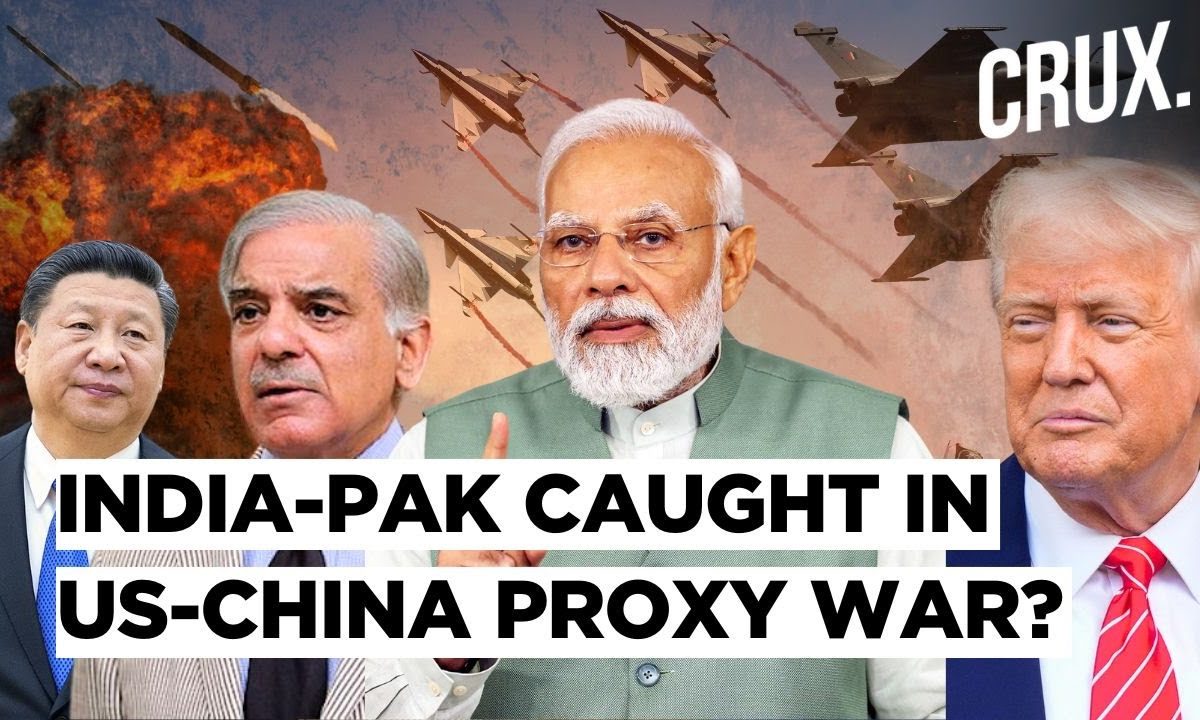

The long-standing conflict between India and Pakistan, rooted in territorial disputes and historical grievances, has been magnified by the increasing involvement of the United States and China as arms suppliers. This has resulted in a complex dynamic where the military capabilities of both nations are significantly influenced by external powers.
The Role of the United States
The United States has been a major supplier of military equipment to Pakistan since the mid-20th century. Although, at times, this relationship has been strained, the US has consistently provided Pakistan with arms and military assistance. Between FY2002 and FY2014, the Pentagon reported Foreign Military Sales agreements with Pakistan worth approximately $5.4 billion. These sales included F-16 combat aircraft and related equipment. Additionally, Congress appropriated around $3.6 billion in Foreign Military Financing (FMF) for Pakistan since 2001. These funds are used to purchase U.S. military equipment for longer-term modernization efforts.
Major defense supplies provided to Pakistan under FMF include P-3C Orion maritime patrol aircraft, military radio sets, TOW anti-armor missiles, and surveillance radars. Pakistan has also been granted U.S. defense supplies as Excess Defense Articles (EDA), including C-130E Hercules transport aircraft and AH-1F Cobra attack helicopters. In 2015, the State Department approved a potential $952 million FMS deal with Pakistan for AH-1Z Viper attack helicopters and Hellfire II missiles.
The U.S. defends its arms sales to Pakistan by stating that they help to bolster the fight against terrorist threats. However, India has criticized these sales, suggesting that they are the target of the deals. The U.S. has maintained strong ties with both India and Pakistan for decades. Over the last 30 years, the U.S. has prioritized strengthening its relationship with India as it seeks allies in the region to counter China's growing strength.
China's Increasing Influence
China has emerged as a dominant arms supplier to Pakistan, providing 81% of its military imports in the last five years. Between 2019 and 2023, arms imports from China to Pakistan were valued at $5.28 billion, accounting for 63% of Pakistan's total arms imports. This has allowed Pakistan to acquire military hardware despite its struggling economy.
Key military hardware supplied by China includes JF-17 Thunder fighter jets, Type-041 Yuan-class conventional submarines, and SH-15 155mm self-propelled artillery guns. The JF-17 is a mainstay of the Pakistan Air Force after the U.S. stopped supplying F-16s. Deliveries of Type-041 Yuan-class submarines are scheduled from 2022 to 2028, with the deal valued at $5 billion. China has also delivered surface-to-air missiles and defense systems to Pakistan, including long-range HQ-9 systems, medium-range LY-80s, and low-altitude portable FN-6 missiles.
China sees Pakistan as an essential part of its geopolitical strategy to counterbalance India and secure access to the Arabian Sea through the Gwadar port. China has invested billions in Pakistan through the China-Pakistan Economic Corridor (CPEC) and arms supplies. Some analysts believe the recent conflict between India and Pakistan offers China a rich intelligence opportunity to glean data from its fighter jets and other weapons used in action by Pakistan.
India's Response and Modernization Efforts
In response to the military support received by Pakistan from the U.S. and China, India has ramped up its defense modernization efforts. India is strategically transitioning to a self-reliant defense ecosystem by boosting indigenous production and reducing reliance on imports. In 2023-24, domestic defense production hit a record ₹1.27 lakh crore, a 16.7% rise from 2022-23.
India is also focused on strengthening its naval power to address piracy and protect maritime interests in the Indo-Pacific region. The induction of INS Vikrant, India's first indigenous aircraft carrier, showcases growing maritime prowess. India has also upgraded indigenous missile systems like Agni, Prithvi, and BrahMos to improve strike capabilities.
The Defence Acquisition Council (DAC) has approved proposals worth billions to enhance the capabilities of the armed forces. These include the procurement of Future-Ready Combat Vehicles (FRCVs) for the Army and Airborne Early Warning & Control (AEW&C) aircraft systems for the Air Force.
Escalation and Ceasefire
Recent tensions between India and Pakistan escalated following an attack on tourists in Indian-administered Kashmir. India launched missile strikes into Pakistan-controlled territory, leading to a response from Pakistan. The conflict included intense drone activity and missile strikes.
After the escalation, a ceasefire agreement was reached. However, the ceasefire was short-lived, with both sides accusing each other of violations. The United Nations and countries around the world have welcomed the truce. The US President has also said he will work with both India and Pakistan to help end the conflict in Kashmir.
The involvement of the U.S. and China in arming India and Pakistan has amplified the longest-running conflict in South Asia. The military support provided by these external powers has increased the stakes and complexity of the conflict, making it more challenging to resolve.